Alaska (><) Philippines Connection 10
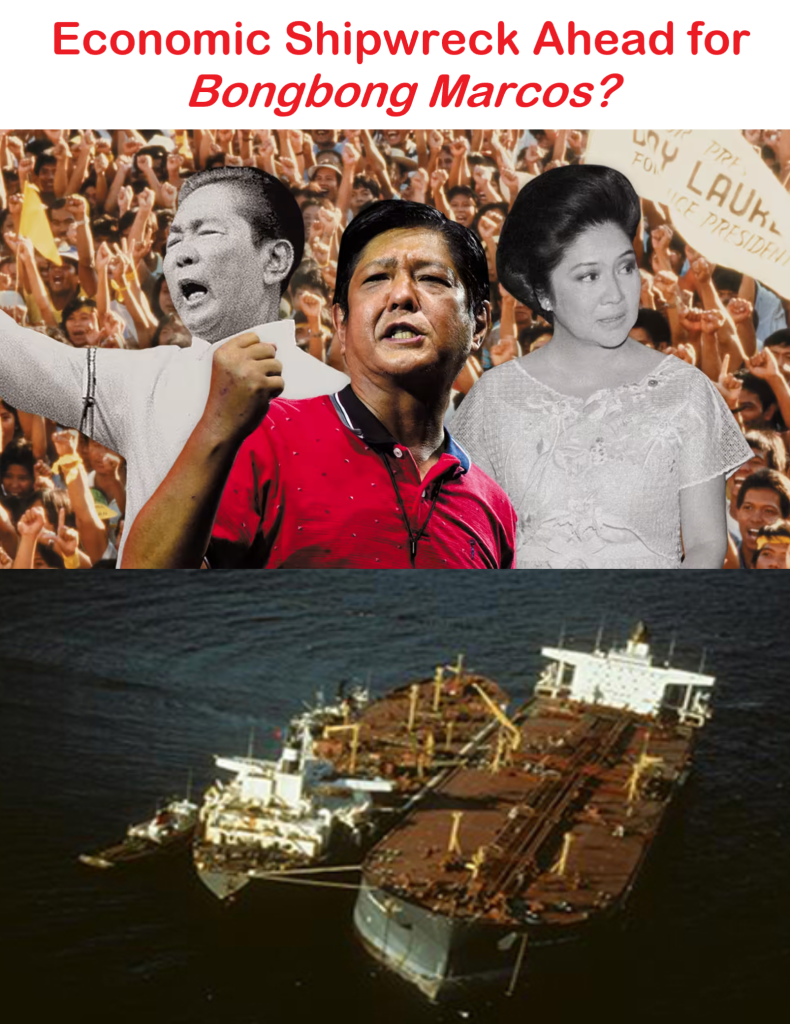
A political miscalculation by Ferdinand Marcos, Sr. resulted in his losing a “snap” election February 7, 1986 he called to show he was still-da-man. By calling this election Marcos forced the opposition to organize around one person; that person became the first woman president of Philippines, Corizon Cojuangco Aquino, wife of the murdered Marcos opposition patriot, Benigno “Ninoy” Aquino.
[1]From Senator to Prisoner: The Story of Ninoy Aquino, Philippines Marshal Law Museum
And while election of Cory Aquino was an advance for freedom and democracy in Philippines after Marcos, it was likely a setback for the economy.
Midway in the Aquino Administration, March 24, 1989, Alaska would see its own catastrophe–the spilling of 11 million gallons of crude oil, just loaded at the Valdez Terminal, into the ecologically sensitive Prince William Sound–impacting 1,300 miles of pristine wilderness shoreline.
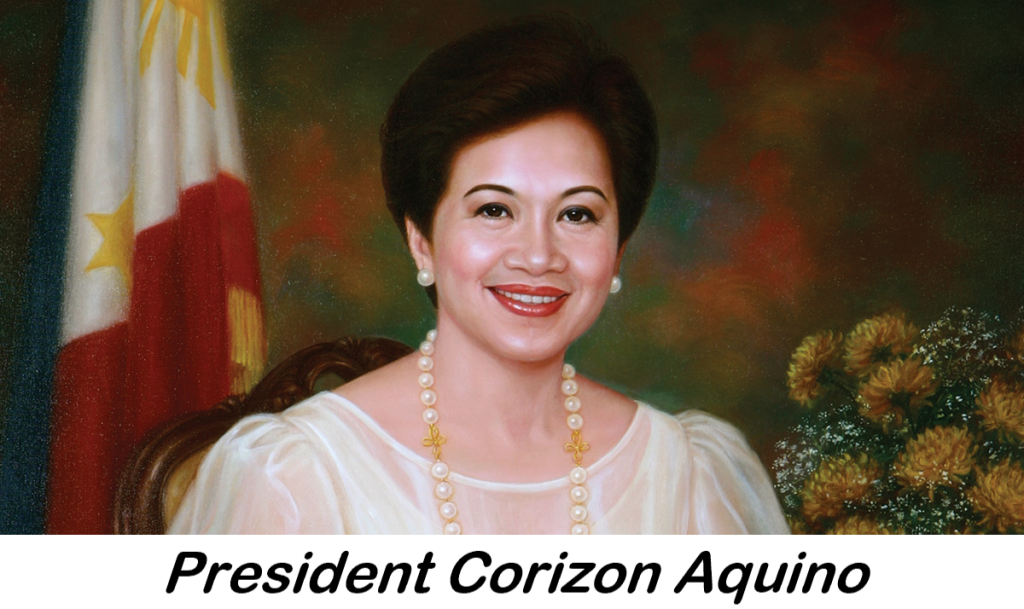
The Aquino Legacy
From the gathering of one million signatures to draft Cory Aquino, to the human barricades that stopped Marcos’ tanks in the streets of Manila, this was an unprecedented phenomenon of The People working together for the return of democracy. Aquino’s government was quite different from past presidents. She inspired hope among Filipinos because she came to power February 25, 1986 without seeking it.
[2]The Philippine Presidents and Other Nation Builders, Rosario P. Nem Singh
The Filipino’s Faith in Himself and the Nation had been Restored.
The Aquino government at the start was referred to as a revolutionary government because it was born during the People’s Revolution with a provisional Freedom Constitution promulgated March 25, 1986. Pres. Aquino took on the task of changing the political system under the Marcos regime from parliamentary to presidential. The draft constitution created by a 50-member commission was ratified by the people in a plebiscite February 2, 1987.
The country had been traumatized by conjugal dictators Ferdinand and Imelda Marcos. Aquino assured certain provisions were in the constitution to return to a democratic system. Safeguards were put in place to prevent abuse of martial law powers of the president. Term limits were installed. Shift from parliamentary to presidential form of government with elected president serving 6 years. Autonomy to Muslim Mindanao and the Cordillera regions. A party-list system of proportional representation in the election of representatives to the House of Representatives–from national, regional and sectoral parties or organizations or coalitions thereof—was established, requiring registeration with the newly established Commission on Elections (COMELEC).
Unfortunately, protectionist economic policies in this constitution have had detrimental effects upon Philippines’ place in the evolving world economy since then. According to a report of the Organization for Economic Cooperation and Development (OECD) in 2020, Philippines was ranked as the third most restrictive out of 83 economies on the Foreign Direct Investments (FDI) Regulatory Restrictiveness Index, following Palestine and Libya
[3]AMENDED PUBLIC SERVICE ACT BOOSTS PH GLOBAL COMPETITIVENESS
This was not entirely populous Pres. Aquino’s fault and it has been a difficult challenge since. She decided to abandon the 62-megawatt Bataan Nuclear Power Plant “brecause of safety and corruption issues” and replace it with coal-fired power plants in Calaca, Batangas, which was delayed because of environmental concerns by the same groups who had demanded scuttling nuclear power.
According to Guido Delgagdo, former president of the National Power Corporation, the shortage of power generating sources eventually resulted in a “full-blown power crisis” which resulted in 4- up to 12-hour brownouts in some areas of the country.
Aquino’s Chief of Staff, Fidel Valdez Ramos became her successor as president and was given Emergency Powers to deal with this electrification power crisis. He fast-tracked construction, repair, rehabilitation, and whatever else it took to entice the private sector to invest in power plants. By the time Ramos’ term ended in 1998, the power sector had 11,998 megawatts at its disposal from fossel fuel sources—adequate but a far cry shorter than the previous 62 megawats from nuclear–now requireing dependency on fossel fuel supplies.
[4]The Philippine Presidents and Other Nation Builders, Rosario P. Nem Singh
Exxon Valdez Supertanker Catastrophe in Alaska
On the morning of the Exxon Valdeq disaster in Prince William Sound this writer heard the news from inside the cabin of his sailboat home parked in Juneau’s Harris Harbor. The act of a drunk captain would galvanize government and private enterprise to clean up the horrific mess. News from National Public Radio was stark: The Exxon Valdez, ran aground on Bligh Reef during a voyage from Valdez, Alaska, to California. Delayed efforts to contain the spill and naturally strong winds and waves dispersed nearly 11,000,000 gallons (41,640 kilolitres) of North Slope crude oil across the sound.
Thousands of workers and volunteers would ultimately help to clean up after the oil spill, and Exxon provided $2.1 billion in funding. The spill exterminated much native wildlife, including salmon, herring, sea otters, bald eagles, and killer whales.
From Encyclopedia Brittanica:
https://www.britannica.com/
The National Transportation Safety Board (NTSB) eventually assigned most of the blame for the oil spill to Exxon, citing its incompetent and overworked crew. The board also faulted the U.S. Coast Guard for an inadequate system of traffic regulation. After evidence suggested that Joseph J. Hazelwood, the ship’s captain, had been drinking before the accident, Exxon terminated his employment. In 1990 the U.S. Congress passed the Oil Pollution Act in direct response to the Exxon Valdez accident. Among other measures, the act created procedures for responding to future oil spills, established the legal liabilities of responsible parties, and set a schedule for banning single-hulled tankers from U.S. waters by 2015.
This Emergency Required Immediate Response and Accountability
I knew people who worked for the Alaska Department of Environmental Conservation who participated in the bureaucratic goat-rope when that agency tried to be relevant. I knew people who went to the site and helped clean rocks with heated water blaster equipment. Except for removing the obvious oil floating on the water, I do not believe the efforts made much difference, and to this day surface oil can be found by digging down in some places that were saturated. Many safeguards have been implemented to reduce the liklihobod of such a disaster ever occurring again, but the worst oil disaster in U.S. History was yet to happen: The British Petroleum Deepwater Horizon Spill April 2, 2010 in the Gulf of Mexico. This spill likely contributed to BP deciding to sell off its Alaska interests.
[5]Why British Petroleum left Alaska and what every Alaskan needs to know about the Oil Business.

The moral from this event: Don’t Drink and Drive.
A Need for Philippine Economic Freedom
Today Philippines is hampered by many economic policies enshrined in the 1987 Constitution that serve as binding constraints. These provisions are restrictive, protectionist, and anti-competitive, according to findings of the FEF Study Group on Constitutional Reforms.
[6]The Quest for a Federal Republic, The PDP Laban Model of Philippine Federalism 1.0
Recent Philippine Presidents have attempted to address these conditions as possible in the political arena.
Pres. Rodrigo Duterte’s administration enacted three economic liberalization laws they hoped would boost the Philippine economy’s global competitiveness and cushion impact of external shocks such as those brought about by the raging Ukraine-Russia conflict. The Retail Trade Liberalization Act, Foreign Investments Act, and the Amended Public Services Acts were all signed into law before Dutarte left office; March 2, 2022, respectively. Amendment of the Retail Trade Liberalization Act of 2000 (RTLA), to lower the paid-up capital requirement for foreign retail enterprises and other purposes was signed Dec 1, 2021. The Foreign Investment Act of 2021 allows for the first time international investors to set up and fully own small and medium-sized businesses, and hold 100% equity in firms in sectors where they could already operate. Previously, foreign investors could only invest in small businesses if they hired at least 50 Filipino workers. The Foreign Investment Law was further expanded by Congress and Dutarte to encourage foreign investments in enterprises that significantly expand livelihood and employment opportunities for Filipinos; enhance economic value of agricultural products; promote the welfare of Filipino consumers; expand the scope, quality and volume of exports and their access to foreign markets…[Mar 2, 2022]
Socio-economic Planning Secretary Karl Kendrick Chua pointed out: This reform will help bring in more foreign investments and improve services, especially in transport and telecommunications where we are lagging behind. This will benefit all Filipinos through better quality goods and services at lower prices and more meaningful job prospects.
The Reality of Today’s Philippine Economy
Some Philippine economic experts are now challenging President Marcos in his Second State of the Nation Address July 24, 2023 assertions that the economy I doing well.
[7]Ferdinand R. Marcos Jr., Second State of the Nation Address, July 24, 2023
The President blames Inflation but economic indicators tell a different story, according to JC PUNONGBAYAN .
[8][ANALYSIS] After a year under Marcos, is PH economy grinding to a halt?
One obvious culprit – acknowledged by the Marcos technocrats – is the sky-high inflation rates we’ve seen since last year, peaking at 8.7% in January 2023, said Dr. Punongbayan. Rising inflation means prices are not just rising – they’re accelerating.
He continued: People are naturally thinking twice before they spend on restaurant meals, food deliveries, and the like. Worse, many people may be skipping meals because food has become unaffordable. What ensues is slower food spending; worse, hunger.

For the second quarter of 2023, total output grew by a measly 4.3%. This is unsettlingly low for several reasons, according toPunongbayan. First, this is the lowest GDP growth since the first quarter of 2021, when the pandemic was just a year old. Worse, if you discount the pandemic recession, this is in fact the slowest expansion of the economy since the fourth quarter of 2011, or almost 12 years ago, when GDP growth clocked in at just 4%.
Numbers Don’t Lie
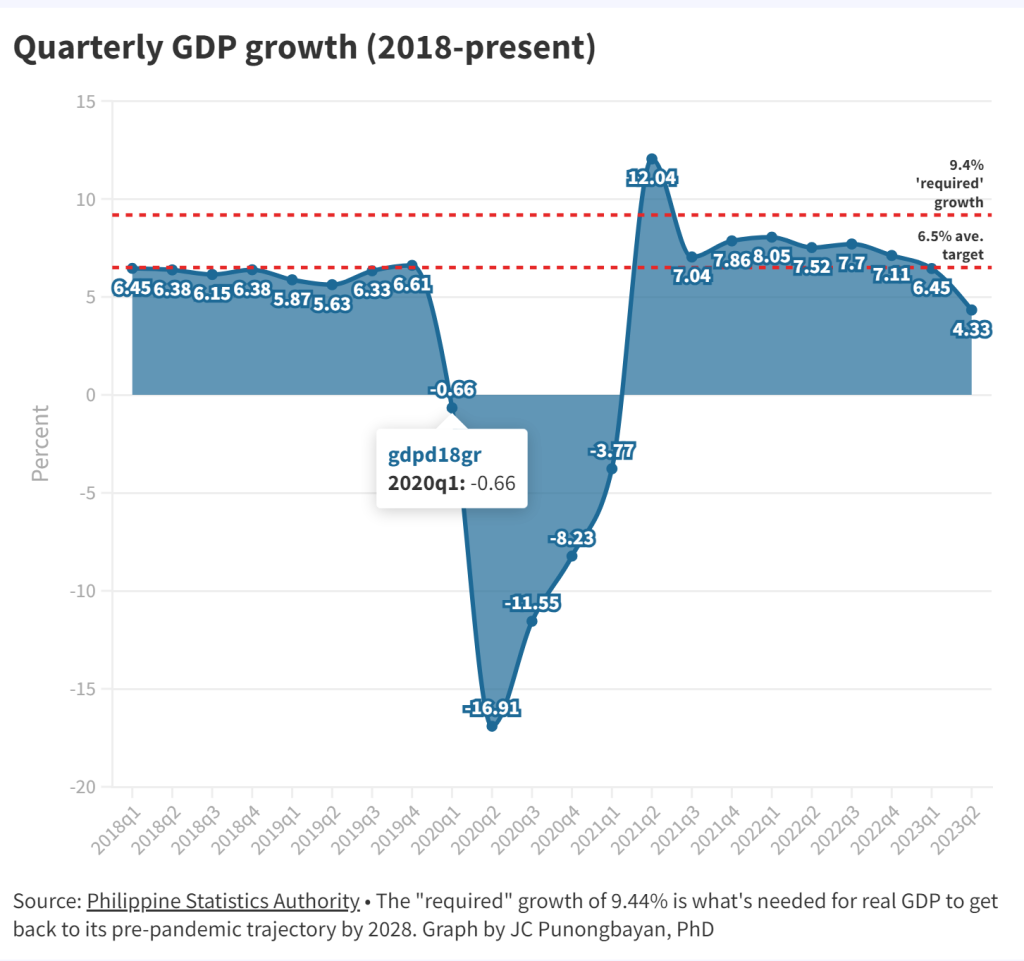
To sum, in the second quarter of 2023, spending has become anemic across the economy. In fact, compared to January to March 2023, spending shrank across the board, except for exports, said Punongbayan. It’s very rare for nearly all spending categories to shrink in the same quarter. This is, in fact, a historical outlier, one that betrays a much weaker Philippine economy under Marcos – certainly much weaker than what he and his economic managers are letting on.
Another noteable Phillipine Economist, Winnie Monsod, also challenged Pres Marcos rosy perspective.
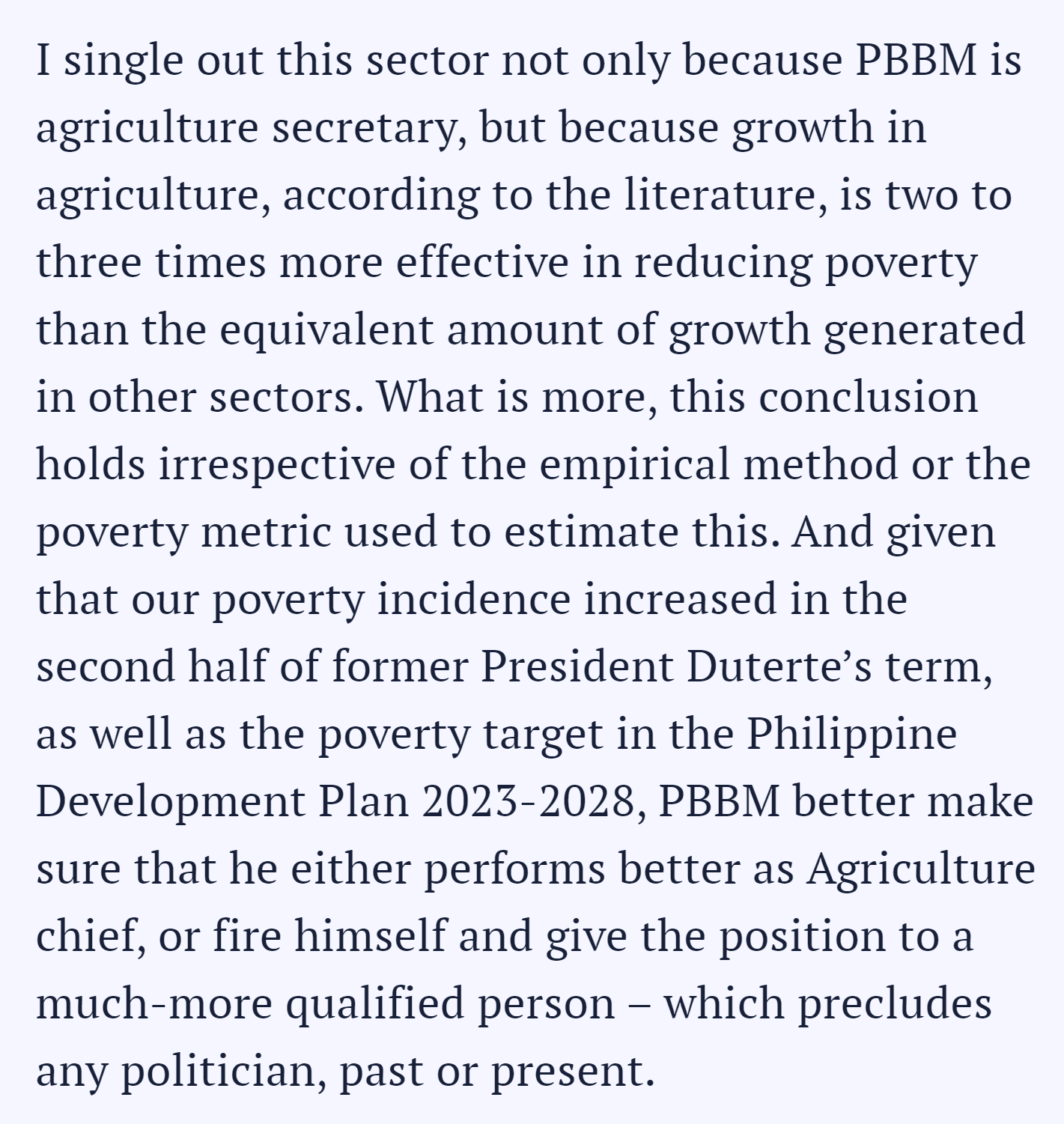
[9][AMALYSIS] The 2nd quarter GDP estimates: What do they mean?
Alaska also currently Lags in GDP, taking a 5% hit from Covid-19
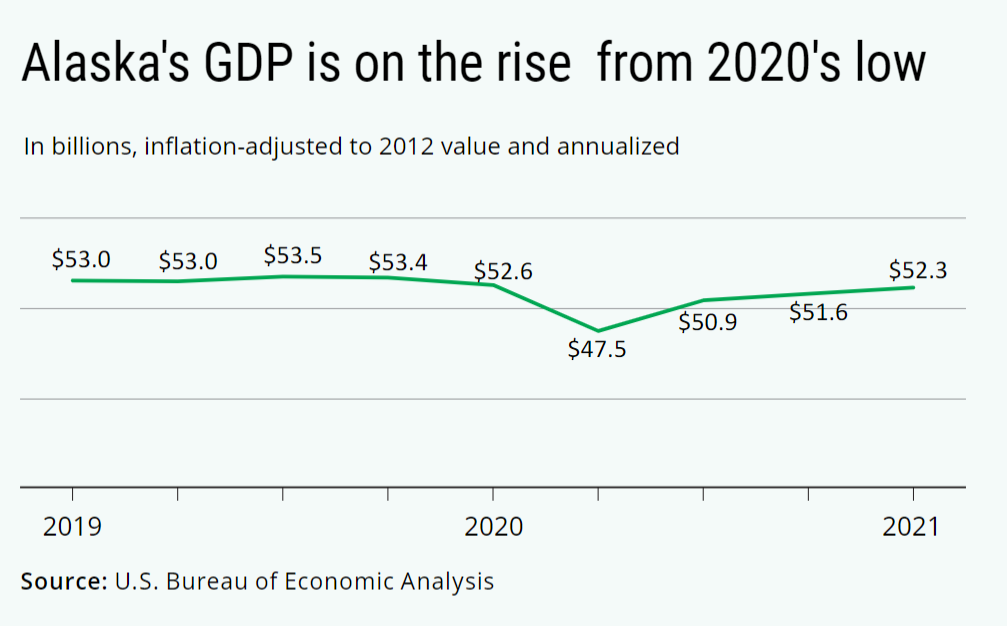
When it comes to inflation, Alaska’s cost of living is traditionally way up there:
After Alaska recorded annual deflation in 2020 for the first time, prices rose sharply over the next two years. Inflation hit a 41-year high of 8.1 percent in 2022.
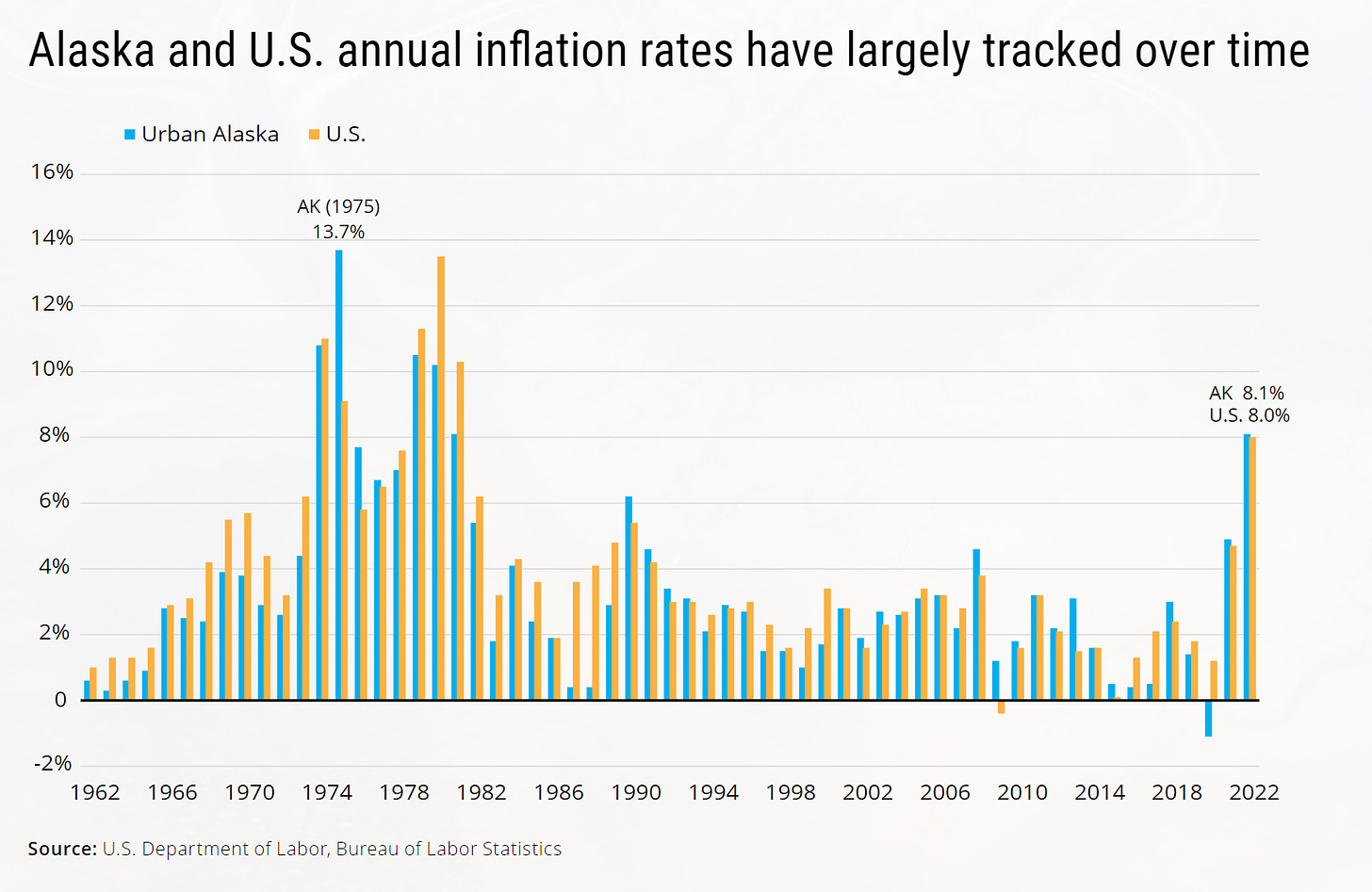
We in Alaska expect to pay more for everything because of the cost of transportation to bring nearly everything we consume in from someplace else. It is just one of many factors, including the weather, that keeps the population small with a high turnover rate of people who come here for their Alaska Adventure hoping to go home with a big retirement after at least 20 years.
[10]The Cost of Living in Alaska, AK Department of Labor, Alaska Economic Trends July 2023
What most people talking about cost of living in Philippines remember is Marcos Jr.’s promise he would assure cost of rice going down to 20 Pesos per kilo; rice is now up to 60 Pesos per kilo but all they hear from the President after one year is happytalk.
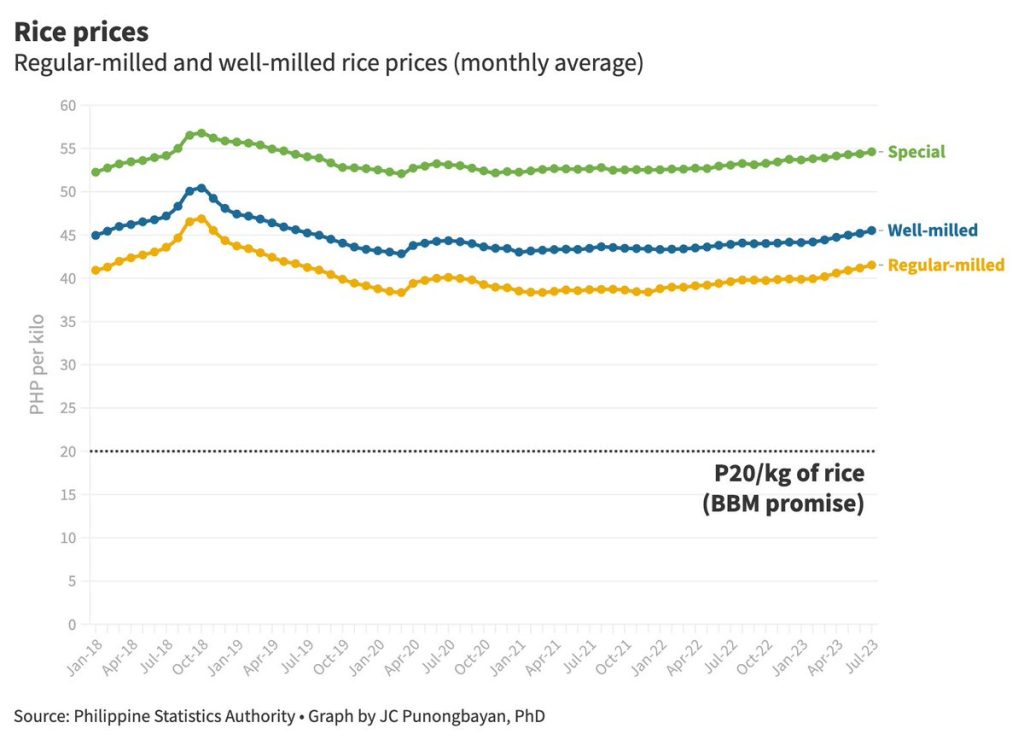
References:
[1]From Senator to Prisoner: The Story of Ninoy Aquino, Philippines Marshal Law Museum
https://martiallawmuseum.ph/magaral/from-senator-to-prisoner-the-story-of-ninoy-aquino/
[2]The Philippine Presidents and Other Nation Builders, Rosario P. Nem Singh, Isa-Jecho Publishing, Inc., Villa Manaoag, Bulacan, Philippines, p-73
[3]AMENDED PUBLIC SERVICE ACT BOOSTS PH GLOBAL COMPETITIVENESS, 28 March 2022 (Manila Bulletin)
http://www.fef.org.ph/opinion/amended-public-service-act-boosts-ph-global-competitiveness/
[4] The Philippine Presidents and Other Nation Builders, Rosario P. Nem Singh, P-94
[5]Why British Petroleum left Alaska and what every Alaskan needs to know about the Oil Business. https://donnliston.net/2023/01/why-is-bp-leaving-alaska-2019-donnliston/
[6]The Quest for a Federal Republic, The PDP Laban Model of Philippine Federalism 1.0, Laban Federalism Institute, 2F 244-B F.B. Harrison Dt. Cor. Palm Court, Pasay City, Metro Manila.
https://www.facebook.com/pdpfedinstitute/posts/the-book-the-quest-for-a-federal-republic-the-pdp-laban-model-of-philippine-fede/595098217590667/
[7]Ferdinand R. Marcos Jr., Second State of the Nation Address, July 24, 2023
https://www.officialgazette.gov.ph/2023/07/24/ferdinand-r-marcos-jr-first-state-of-the-nation-address-july-24-2023/
https://donnliston.net/2023/01/why-is-bp-leaving-alaska-2019-donnliston/
[8][ANALYSIS] After a year under Marcos, is PH economy grinding to a halt?
[9][AMALYSIS] The 2nd quarter GDP estimates: What do they mean?
https://www.rappler.com/voices/analysis-philippine-gdp-q2-estimates-what-they-mean/
[10]The Cost of Living in Alaska, AK Department of Labor, Alaska Economic Trends July 2023
https://live.laborstats.alaska.gov/trends-magazine/2023/July/the-cost-of-living-in-alaska
Alaska GDP Reflects Alaska’s Lag, AK Department of Labor Research & Analysis
https://live.laborstats.alaska.gov/trends-articles/2021/08/decade-of-gdp-reflects-alaska-s-lag
Sign up to this site for my Postcards from Philippines and comprehensive stories like this one!
donnliston907.substack.com

